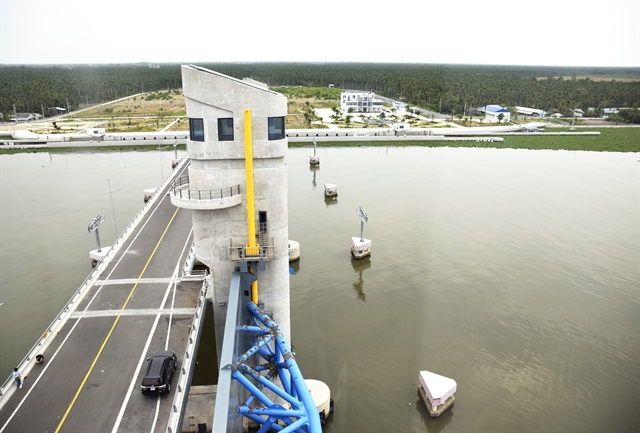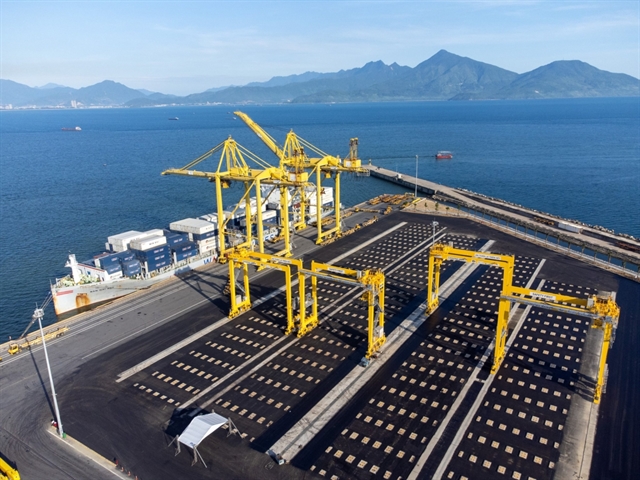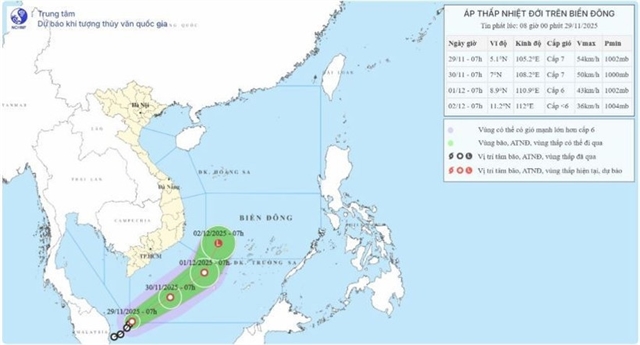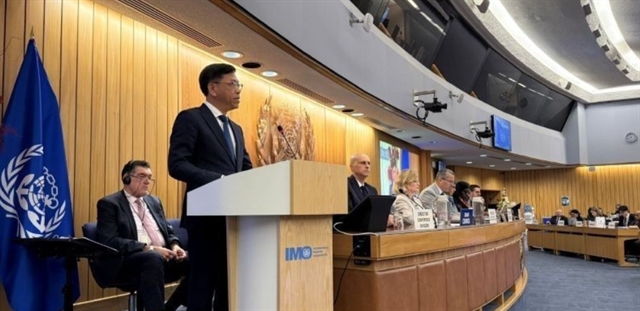 Politics & Law
Politics & Law

 |
| The Cái Lớn-Cái Bé irrigation system in the Mekong Delta Province of Kiên Giang is the biggest in Việt Nam. — VNA/VNS Photo Hồng Đạt |
HÀ NỘI — Water resources, pollution, subsidence and erosion in the Mekong Delta, along with mineral extraction were among the top concerns raised by National Assembly deputies during the hearing on Tuesday, with Minister of Natural Resources and Environment Đặng Quốc Khánh fielding the questions.
On the issue of heavy pollution levels in many rivers across the country, Minister Khánh said from July 1 there would be an organisation formed to tackle river basin management, to help enhance the responsibility of heads of localities in protecting water resources, security and the environment.
Many concerned authorities have been engaged in monitoring and handling violations, but still river pollution persists, according to Khánh.
Water from households – not just industrial activities – is now also full of chemicals such as shampoo or dishwasher soap, which means there must be mechanism to handle those pollutants too.
"We also have a project for dredging and clearing to create flow and address this situation. However, in reality, it is still necessary to raise the responsibility of the community and the people in protecting the rivers," Minister Khánh said.
Khánh told the Assembly that he proposed the Government start a pilot study project on the Bắc Hưng Hải, Nhuệ, and Đáy rivers to develop a roadmap and plan for treatments to help restore them back to clean.
Minister of Agriculture and Rural Development Lê Minh Hoan, also called for an acknowledgement on the importance of water resources and agricultural production. Việt Nam needed to focus on the amount of water, the quality of water and the use of water, he said, stressing that the manner of water use would determine amount and quality aspects.
"We have never considered water a proper form of resources, despite constantly talking about 'water resources'," Minister Hoan claimed.
He said that against escalating climate change, with limited water resources, Việt Nam needed to develop its agriculture along a 'water-shortage' approach and get rid of the practice of flood irrigation that caused overexploitation of both surface and underground water.
"We need a declaration to the people of the Mekong Delta and the entire country that we are not a nation with an abundance of water. We need a comprehensive strategy for both the short term and long term, which may include transitioning from an agriculture that uses water as a free resource, to one where water usage is gradually subject to fees," suggested Minister Hoan.
Mekong subsidence
Regarding questions about Mekong Delta subsidence and erosion issues, that have turned progressively more complex and threatened people’s safety and livelihoods, environment minister Khánh noted that climate change had been impacting all regions across the country.
The Mekong Delta is relatively young compared to other deltas in the world and yet it is still sinking. For example, Cần Thơ City fell ten centimetres from 2005 to 2017, he said.
The significantly reduced amount of alluvial sediments in the Mekong River reaching Việt Nam that replenish this land, the increasing pressure from the encroachment of urban development and aquaculture on riverbanks leading to water flow changes, rampant illegal deep sand mining, all contribute to worsening the situation, according to Minister Khánh.
As for solutions, he said that the ministry was currently tasked with evaluating the project on sand and gravel reserves in the riverbeds of the Mekong Delta, to determine which areas can be mined and the extent of extraction, as this had not been studied before.
Another solution suggested by the minister is for local authorities to review and reorganise residential areas in regions at risk of erosion. High-risk and high-alert areas must immediately implement plans and relocate residents. Additionally, encroachment on riverbeds and riverbanks must be tackled.
 |
| Minister of Natural Resources and Environment Đặng Quốc Khánh at the parliament hearing on Tuesday. — VNA/VNS Photo Phạm Kiên |
Materials for key projects
Trần Kim Yến, the deputy from HCM City’s delegation, questioned the minister on materials for key projects, including the sand mined from rivers, to carry out highway projects, but given that this will be a 'bet against the environment', she asked what sustainable measures can there be.
The environment minister said sand resources were being strained and the construction ministry had conducted some trial projects to see if sand mined from seas could perhaps be a viable alternative source.
The environment ministry’s assessment indicated that the southern province Sóc Trăng currently holds 145 million cu.m of sand lying 20km away from the shore, which could be extracted for immediate use. Extraction should only be done up to a depth of two metres, he said, to lessen environmental impacts.
In terms of concerns about the saline levels of sea sand, he said the environment ministry would issue standards for this material about where it could safely be used.
The environment ministry was also carrying out an investigation and assessment of the potential of sand, gravel, and pebbles in the riverbeds of the Mekong Delta region to serve the sustainable socio-economic development, to provide localities with a basis for planning, exploration and sustainable extraction, adaptable to climate change.
Answering Hoà Bình Province’s delegation questions about mineral extraction for construction projects, Khánh said at the end of 2023, there were nearly 4,000 sites, with close to 50 different types of minerals, being extracted by more than 3,300 organisations and individuals across Viêt Nam – mostly for building materials such as stone, clay, sand, gravel, limestone and white marble.
The total approved reserve for these 4,000 sites reached 500 million cu.m in 2023, with the extraction volume about 143 million cu.m.
Most important strategic mineral sites in the country have been surveyed, according to Minister Khánh.
He added that the Government had submitted to the NA for consideration and feedback on the Law on Geology and Minerals at this session, and it was expected to be passed at the year-end session.
The minister affirmed that the legal framework, mechanisms and policies regarding geology, minerals and the mining industry would continue to be refined to ensure strict management, transparency, economical and efficient use and sustainable development.
In addition there would be a drive towards decentralisation and delegating controls down to local governments, allowing them to proactively develop socio-economic strategies tailored to their specific local conditions, while ensuring accountability. — VNS




